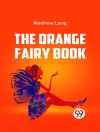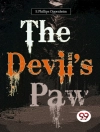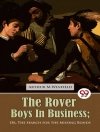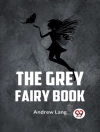In ‘The Boats of the Glen Carrig, ‘ William Hope Hodgson masterfully intertwines elements of horror and adventure set against an eerie, maritime backdrop. The narrative follows a group of shipwreck survivors stranded on a mysterious island filled with grotesque sea creatures and haunting landscapes. Hodgson’s prose is imbued with a naturalistic style that vividly captures the atmospheric dread and isolation inherent to the ocean, reflecting the early 20th-century literary context of exploring psychological terror in tandem with the uncanny. His pioneering approach to weird fiction lays a foundation for future authors in the genre. Hodgson, a sailor himself, drew heavily from his personal experiences at sea, infusing authenticity into his portrayal of maritime life and its perils. His passion for the unknown echoes throughout the text, as he grapples with existential themes stemming from human encounters with nature’s ineffable power. A contemporary of H.P. Lovecraft, Hodgson’s unique blend of horror and philosophical inquiry provides a profound exploration of the human condition. Readers seeking a compelling fusion of cosmic horror and adventure will find ‘The Boats of the Glen Carrig’ to be an essential addition to their literary collection. Hodgson’s exploration of isolation and the uncanny resonates long after the final page, making it a pivotal work in the canon of early weird fiction.
Circa l’autore
William Hope Hodgson (1877–1918) stands as a significant figure in early 20th-century literature, especially known for his contributions to the horror and science fiction genres. Born in Blackmore End, Essex, England, Hodgson ran away to sea at the age of thirteen, an experience that would deeply influence his literary output. His time at sea imbued him with a sense of the vast, often malevolent, power of the ocean, a theme that permeates much of his work. After his sea faring years, he turned his hand to writing, producing works that often blend horror, fantastical elements, and maritime adventure.
Hodgson’s novel ‘The Boats of the Glen Carrig’ (1907) typifies his unique melding of genres. The story, set in the 18th century, follows the survivors of a shipwreck as they encounter otherworldly horrors in a seemingly uninhabited land. It is one of Hodgson’s earlier works and showcases his talent for creating an atmosphere of creeping dread and the eerily uncanny. His literary style is marked by detailed descriptions, a pervasive atmosphere of doom, and an inventive imagination. Hodgson’s influence is seen in the works of later writers, such as H.P. Lovecraft, who admired his ability to evoke cosmic horror. While William Hope Hodgson’s life was tragically cut short by his death in World War I, his work continues to be a touchstone for aficionados of the horror and supernatural fiction tradition.












